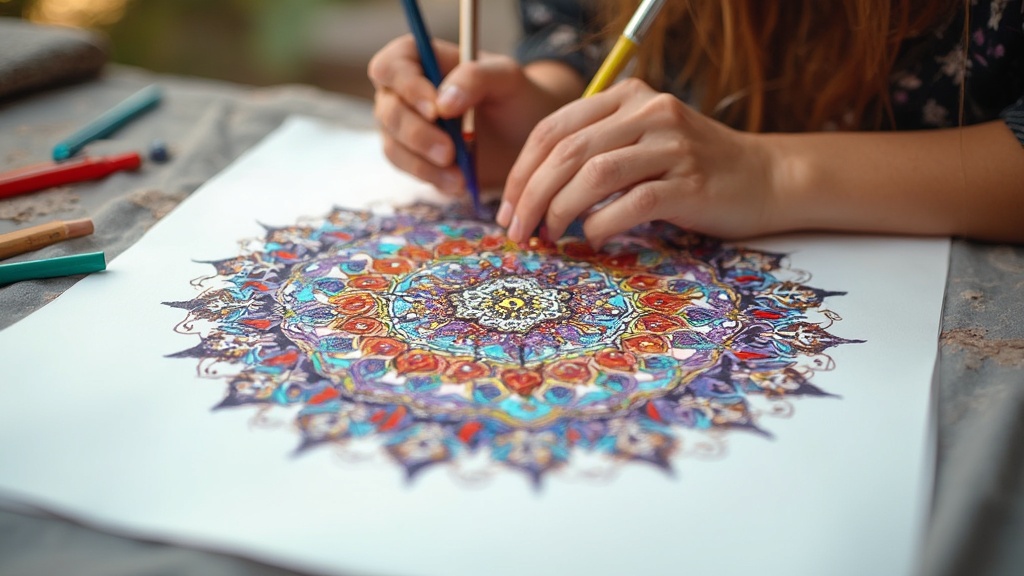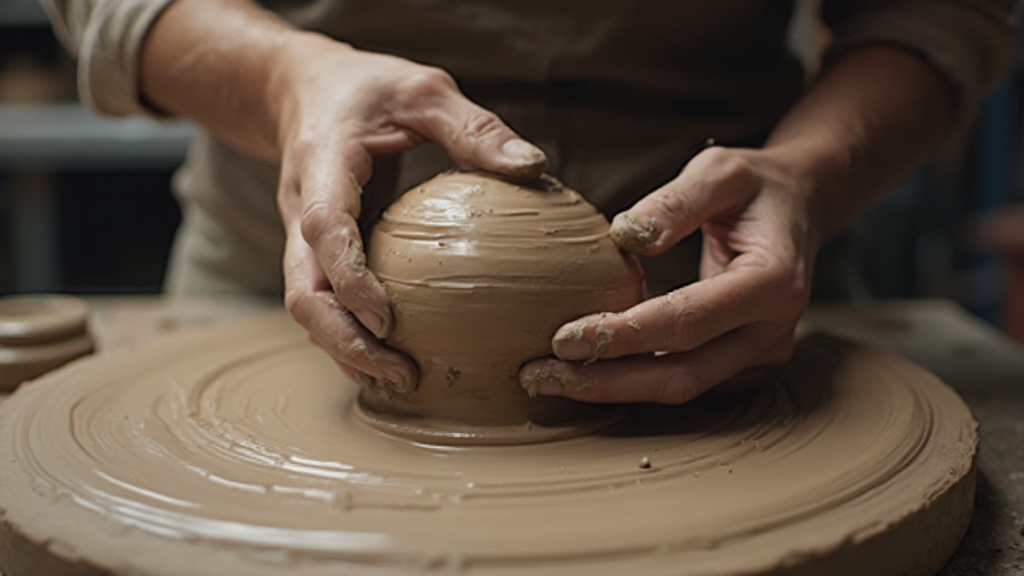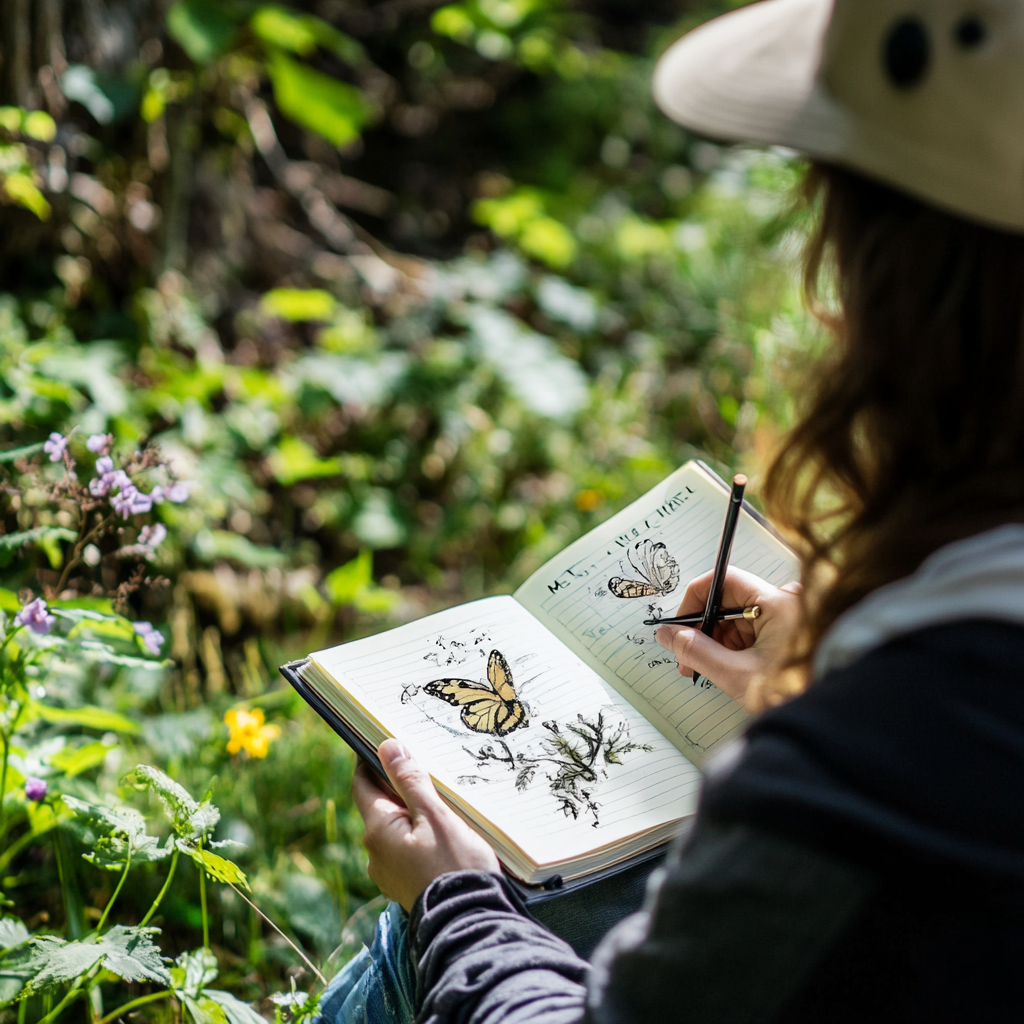9 Art Therapy Exercises to Reduce Anxiety

Table of Contents
Introduction
Anxiety is a common mental health concern that affects millions of people worldwide. While traditional therapies are effective, art therapy has emerged as a powerful tool for managing anxiety and promoting emotional well-being. Art therapy allows individuals to express their feelings, thoughts, and experiences through creative processes, providing a non-verbal outlet for emotions that may be difficult to articulate.
In this blog post, we’ll explore nine art therapy exercises specifically designed to reduce anxiety. These exercises can be practiced at home or in a therapeutic setting, offering a creative approach to managing stress and promoting relaxation. Whether you’re an art enthusiast or someone looking for alternative ways to cope with anxiety, these exercises can provide valuable tools for emotional regulation and self-expression.
Before we dive into the exercises, it’s worth noting that art therapy is a professional field that requires specialized training. If you’re interested in pursuing a career in this field or want to deepen your understanding of art therapy techniques, you might consider exploring the Art Therapy Practitioner course. This comprehensive program can provide you with the knowledge and skills needed to effectively use art therapy in various settings.
Now, let’s explore these nine art therapy exercises that can help reduce anxiety and promote emotional well-being.
1. Mandala Drawing

Time Required: 30-60 minutes
Materials Needed: Paper, pencil, colored pencils or markers, compass (optional)
Mandala drawing is a meditative art form that can significantly reduce anxiety and promote relaxation. The word “mandala” comes from Sanskrit, meaning “circle,” and these intricate designs have been used for centuries in various cultures for spiritual and therapeutic purposes.
To begin, draw a circle on your paper. You can use a compass for precision or freehand it for a more organic feel. Start from the center and work your way outwards, adding patterns, shapes, and colors as you go. There’s no right or wrong way to create a mandala – the process is more important than the final product.
As you draw, focus on your breath and the repetitive motions of your hand. Allow your mind to quiet as you concentrate on the patterns emerging on the paper. This exercise can help interrupt anxious thoughts and bring your attention to the present moment.
Benefits:
- Promotes mindfulness and focus
- Reduces anxiety and stress
- Enhances self-awareness
- Improves fine motor skills
Research published in the BMC Psychology journal suggests that mandala drawing can be an effective tool for reducing anxiety and stress in various populations, including college students. The repetitive nature of mandala creation can induce a state of flow, which is associated with reduced anxiety and increased well-being.
2. Expressive Painting

Time Required: 45-90 minutes
Materials Needed: Canvas or large paper, acrylic paints, paintbrushes of various sizes, water container, palette
Expressive painting is a powerful art therapy technique that allows individuals to release pent-up emotions and anxiety through spontaneous, free-form painting. This exercise encourages you to let go of perfectionism and focus on the act of creation rather than the final product.
To begin, set up your painting area with all the necessary materials. Choose colors that resonate with your current emotional state. There’s no need to plan or sketch – simply start applying paint to the canvas, letting your feelings guide your brush strokes. You might want to use bold, energetic strokes to express anger or frustration, or soft, flowing lines to convey calmness or sadness.
As you paint, pay attention to the physical sensations of the brush against the canvas and the way the colors blend. Allow yourself to become fully immersed in the process, letting go of any judgments or expectations about the outcome.
Benefits:
- Provides an outlet for emotional expression
- Reduces anxiety through creative release
- Promotes self-discovery and insight
- Enhances emotional regulation skills
A study published in the Journal of Clinical Psychology found that expressive art interventions, including painting, can significantly reduce anxiety symptoms in both children and adults. The act of creating without judgment allows individuals to process and release anxious thoughts and feelings in a safe, non-verbal manner.
3. Collage Making

Time Required: 60-90 minutes
Materials Needed: Magazines, newspapers, scissors, glue stick, large paper or cardboard
Collage making is a versatile art therapy technique that can be particularly helpful for individuals who feel intimidated by drawing or painting. This exercise allows you to express your feelings and experiences by selecting and arranging pre-existing images and text.
To start, gather a variety of magazines and newspapers. Begin by flipping through them and cutting out images, words, or phrases that resonate with you or represent your current emotional state. Don’t overthink this process – let your intuition guide you.
Once you have a collection of cutouts, arrange them on your paper or cardboard. Experiment with different layouts before gluing them down. As you create your collage, reflect on why you chose certain images or words and how they relate to your feelings or experiences.
Benefits:
- Facilitates self-expression without the pressure of creating original art
- Helps visualize and externalize internal experiences
- Promotes mindfulness through the process of selection and arrangement
- Encourages reflection and self-discovery
Collage making can be an effective tool for managing anxiety, as noted in the Art Therapy Resources guide. The process of creating a collage can help individuals organize their thoughts and feelings, providing a sense of control and clarity that can alleviate anxiety symptoms.
4. Clay Sculpting

Time Required: 45-60 minutes
Materials Needed: Air-dry clay or modeling clay, sculpting tools (optional), work surface
Clay sculpting is a highly tactile art therapy exercise that can be particularly effective for grounding and reducing anxiety. The physical act of manipulating clay can help release tension and provide a tangible outlet for emotions.
Begin by taking a piece of clay and warming it up in your hands. As you knead and shape the clay, focus on the sensations – its temperature, texture, and malleability. Allow your hands to move intuitively, creating shapes or forms without a predetermined plan.
You might choose to create an abstract sculpture that represents your emotions, or you could sculpt objects or figures that hold meaning for you. The goal is to stay present with the process and let your hands guide you.
Benefits:
- Provides a tactile, grounding experience
- Helps release physical tension
- Allows for three-dimensional expression of emotions
- Promotes mindfulness and present-moment awareness
Research has shown that working with clay can have a calming effect on the nervous system, making it an excellent tool for anxiety reduction. The Core Psychiatry blog highlights how the tactile nature of clay work can help individuals externalize and process complex emotions, leading to reduced anxiety and improved emotional regulation.
5. Art Journaling

Time Required: 20-60 minutes (can be done in short daily sessions)
Materials Needed: Journal or sketchbook, various art supplies (pens, markers, watercolors, etc.), glue stick, scissors
Art journaling combines visual art-making with reflective writing, creating a powerful tool for self-expression and anxiety management. This practice allows you to document your thoughts, feelings, and experiences in a creative, non-linear format.
To begin art journaling, choose a blank journal or sketchbook. There are no rules – you can draw, paint, write, collage, or use any combination of techniques that appeal to you. Start by reflecting on your current emotional state or a specific situation causing anxiety. Use colors, shapes, and images to represent your feelings, and incorporate words or phrases that resonate with you.
Consider creating daily entries to track your emotional journey and identify patterns in your anxiety. You might also use prompts like “What does my anxiety look like?” or “What brings me peace?” to inspire your journal pages.
Benefits:
- Combines visual and verbal processing for holistic expression
- Provides a safe space for emotional exploration
- Helps track emotional patterns over time
- Encourages regular creative practice for ongoing anxiety management
Art journaling can be a particularly effective tool for managing anxiety in children and adolescents. The Hessel Group blog discusses how this technique can help young people express and process complex emotions, leading to improved emotional regulation and reduced anxiety symptoms.
6. Zentangle

Time Required: 15-30 minutes
Materials Needed: Small square paper (3.5 x 3.5 inches), fine-tipped black pen, pencil for shading (optional)
Zentangle is a meditative drawing method that involves creating structured patterns to form beautiful, abstract designs. This technique is particularly effective for reducing anxiety as it promotes focus, mindfulness, and relaxation.
To begin, draw a border around your square paper. Then, lightly draw a “string” across the paper – this can be any curved or straight line that divides the space into sections. In each section, fill in repetitive patterns called “tangles.” These can be any designs you like – dots, lines, curves, or more complex shapes.
As you draw, focus on each stroke. There’s no need to plan ahead or worry about mistakes – in Zentangle, there are no errors, only opportunities for creativity. The goal is to become absorbed in the process, allowing your mind to quiet and your anxiety to fade.
Benefits:
- Promotes mindfulness and present-moment awareness
- Reduces anxiety through focused attention
- Improves fine motor skills and hand-eye coordination
- Boosts self-esteem through the creation of beautiful artwork
The repetitive nature of Zentangle can have a calming effect on the nervous system, similar to meditation. This technique is often recommended for individuals dealing with anxiety, as highlighted in the art therapy activities for depression guide. The structured yet creative approach of Zentangle can provide a sense of control and accomplishment, which can be particularly beneficial for those struggling with anxiety.
7. Nature Art

Time Required: 30-60 minutes
Materials Needed: Natural materials (leaves, flowers, stones, twigs, etc.), outdoor space
Nature art, also known as land art or environmental art, involves creating temporary sculptures or patterns using natural materials found outdoors. This practice combines the anxiety-reducing benefits of being in nature with the therapeutic effects of creative expression.
To begin, find a quiet outdoor space and collect natural materials that appeal to you. You might create a mandala using leaves and flowers, build a small sculpture with stones, or arrange twigs into patterns on the ground. As you work, focus on the textures, colors, and shapes of the materials you’re using.
The ephemeral nature of this art form can be particularly powerful for managing anxiety. It encourages mindfulness and acceptance of impermanence, reminding us that change is a natural part of life.
Benefits:
- Combines the calming effects of nature with creative expression
- Promotes mindfulness and connection with the environment
- Encourages acceptance of impermanence and change
- Provides a sense of grounding and perspective
Engaging with nature through art can have significant benefits for mental health. The guide on expressing emotions through art discusses how nature-based art activities can help individuals process complex emotions and reduce anxiety by fostering a sense of connection with the natural world.
8. Body Mapping

Time Required: 60-90 minutes
Materials Needed: Large paper (big enough to trace your body), colored markers or paints, pencil
Body mapping is a powerful art therapy technique that helps individuals visualize and explore their physical and emotional experiences. This exercise can be particularly helpful for those dealing with anxiety, as it allows for a tangible representation of where and how anxiety manifests in the body.
To begin, lay down on a large piece of paper and have someone trace the outline of your body, or draw a simple body outline yourself. Then, using colors, symbols, or words, begin to map out your physical sensations and emotions on the body outline. You might use red to represent areas of tension, blue for calm areas, or draw symbols like knots or butterflies to represent specific feelings.
As you create your body map, reflect on where you feel anxiety in your body and how it affects you physically and emotionally. This process can help increase body awareness and provide insights into your anxiety patterns.
Benefits:
- Increases body awareness and understanding of physical anxiety symptoms
- Provides a visual representation of emotional experiences
- Facilitates discussion and exploration of anxiety patterns
- Promotes self-reflection and insight
Body mapping has been used effectively in various therapeutic settings, including anxiety management. The guide on art therapy for children discusses how this technique can help young people better understand and communicate their anxiety experiences, leading to improved self-awareness and coping strategies.
9. Color Breathing

Time Required: 10-15 minutes
Materials Needed: Colored pencils or markers, paper
Color breathing is a simple yet effective art therapy technique that combines visualization, breathwork, and color theory to reduce anxiety. This exercise can be particularly helpful for quick anxiety relief and can be practiced almost anywhere.
To begin, choose a color that represents calmness or relaxation to you. This might be a soft blue, a soothing green, or any color that you associate with peace. Next, choose a color that represents anxiety or stress – perhaps a harsh red or a murky brown.
Close your eyes and visualize breathing in your calming color, imagining it filling your body with each inhale. As you exhale, visualize the anxiety color leaving your body. Continue this for several breaths, focusing on the colors and the sensation of breathing.
After the breathing exercise, use your chosen colors to create a simple abstract drawing that represents your experience. This could be waves of color, concentric circles, or any pattern that feels right to you.
Benefits:
- Combines the calming effects of breathwork with color visualization
- Provides a quick and accessible anxiety reduction technique
- Enhances mind-body connection
- Offers a visual representation of the anxiety release process
Color breathing is a versatile technique that can be adapted for various ages and situations. The guide on creative art therapy for children explores how this method can be used to help young people manage anxiety in a playful and engaging way.
Conclusion
Art therapy offers a diverse range of techniques that can be incredibly effective in reducing anxiety and promoting emotional well-being. From the meditative practice of mandala drawing to the expressive release of painting, and the grounding experience of clay sculpting to the mindful creation of Zentangles, these exercises provide various pathways to manage anxiety through creative expression.
It’s important to remember that while these exercises can be beneficial, they are not a substitute for professional mental health treatment. If you’re struggling with severe anxiety, it’s always best to consult with a mental health professional. For those interested in deepening their understanding of art therapy, courses like the Introduction to Art Therapy can provide valuable insights and skills.
Incorporating these art therapy exercises into your routine can offer a creative outlet for processing emotions, reducing stress, and cultivating mindfulness. Whether you’re new to art or an experienced creator, these techniques are accessible and adaptable to your needs and preferences.
Remember, the goal of these exercises is not to create perfect artwork, but to engage in the process of creation as a means of self-expression and anxiety reduction. Be patient with yourself as you explore these techniques, and allow yourself the freedom to experiment and discover what works best for you.
By embracing art therapy as a tool for anxiety management, you’re opening yourself up to a world of creative possibilities for emotional healing and personal growth.
Explore More
References
- Wounded Warrior Project – Veteran PTSD Treatment Support Resources
- Core Psychiatry – Unveiling the Healing Power of Art Therapy for Mental Wellness
- Artscape – Expressive Arts for Holistic Well-Being
- Art Therapy Resources – Art Therapy Exercises for Anxiety
- BMC Psychology – Mindfulness-based Art Therapy for Anxiety Reduction
- Hessel Group – Art Therapy Techniques to Reduce Anxiety in Children
- SciELO – Effects of Art Therapy on Anxiety Among Children and Adolescents










Responses